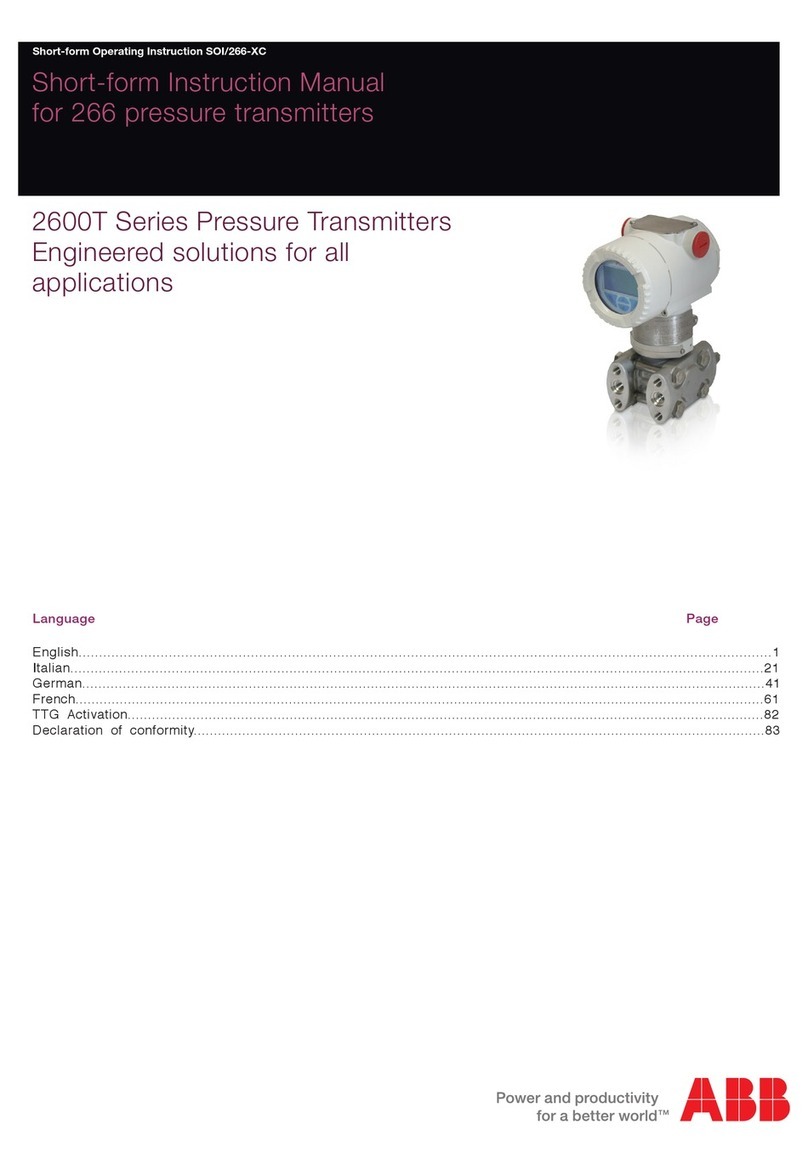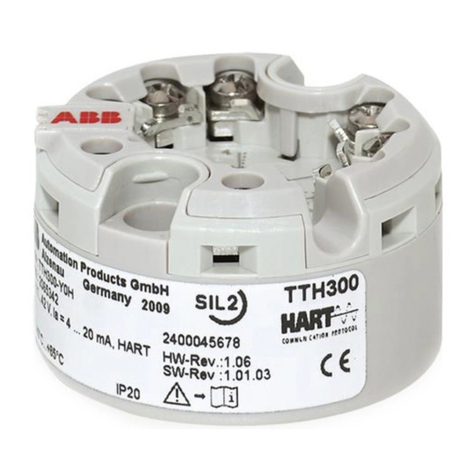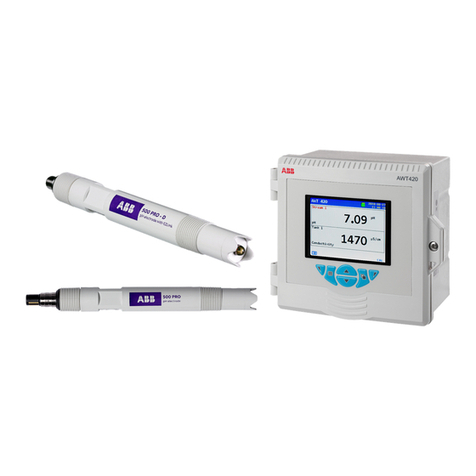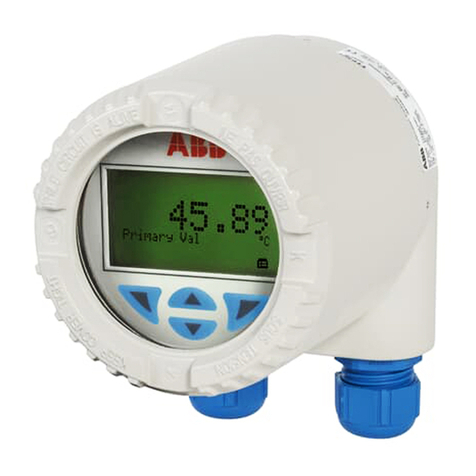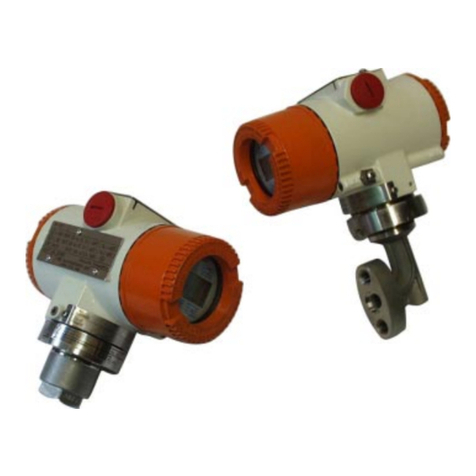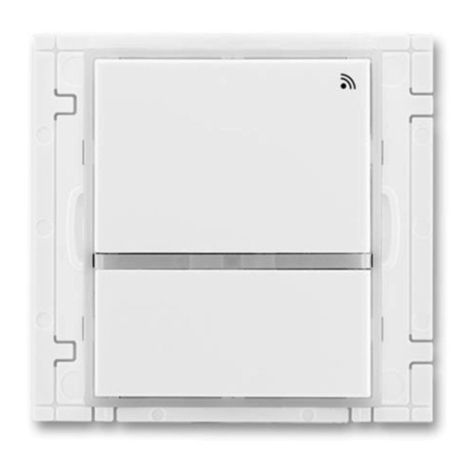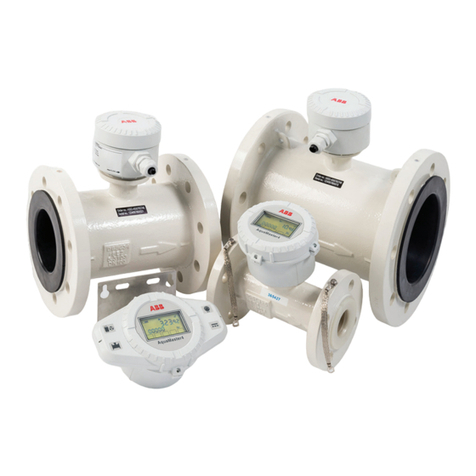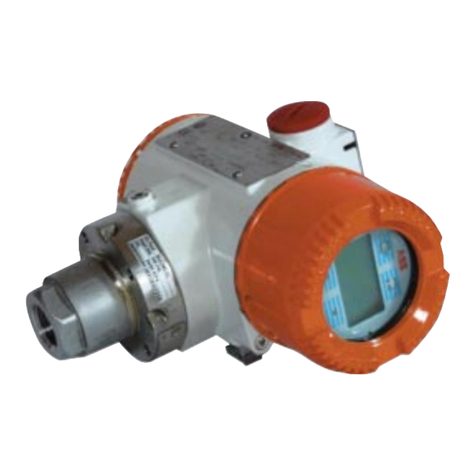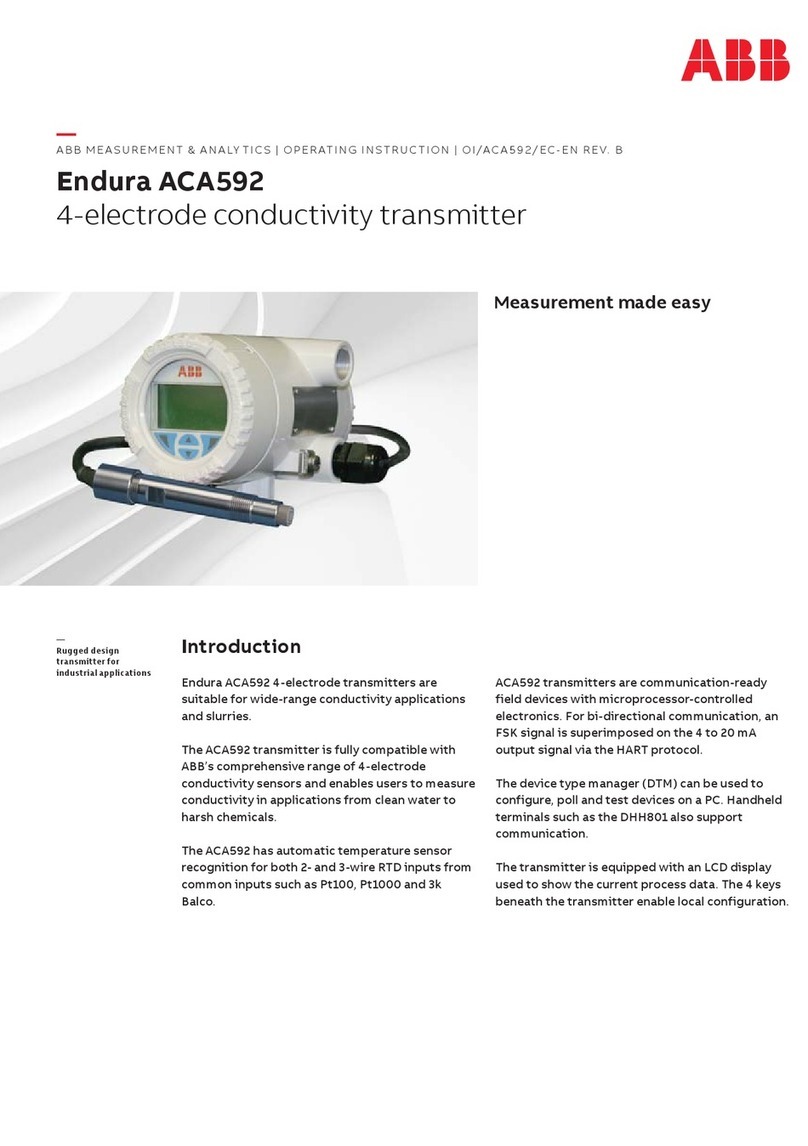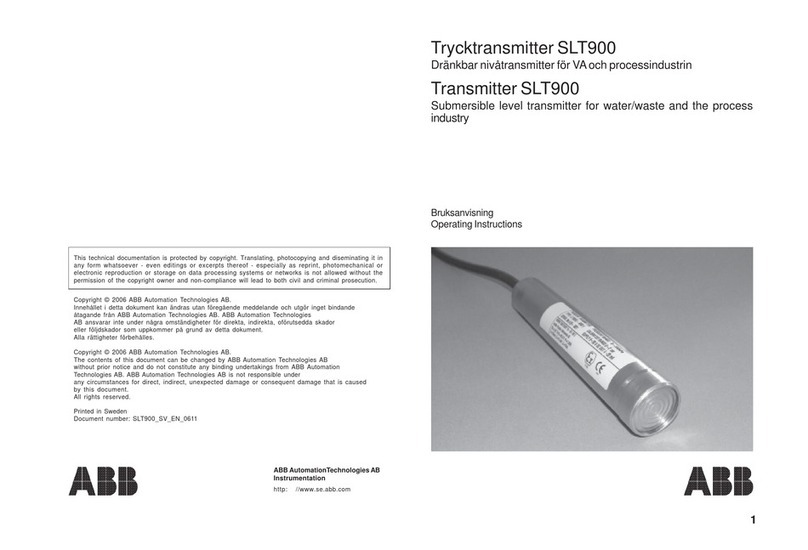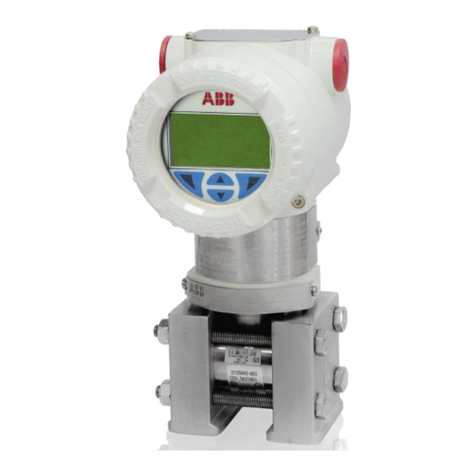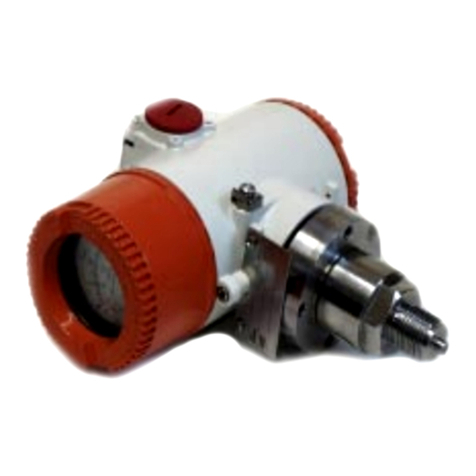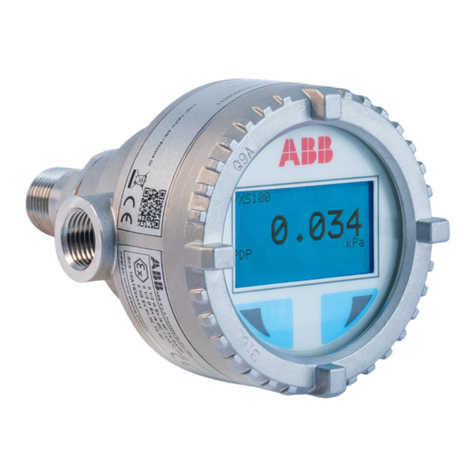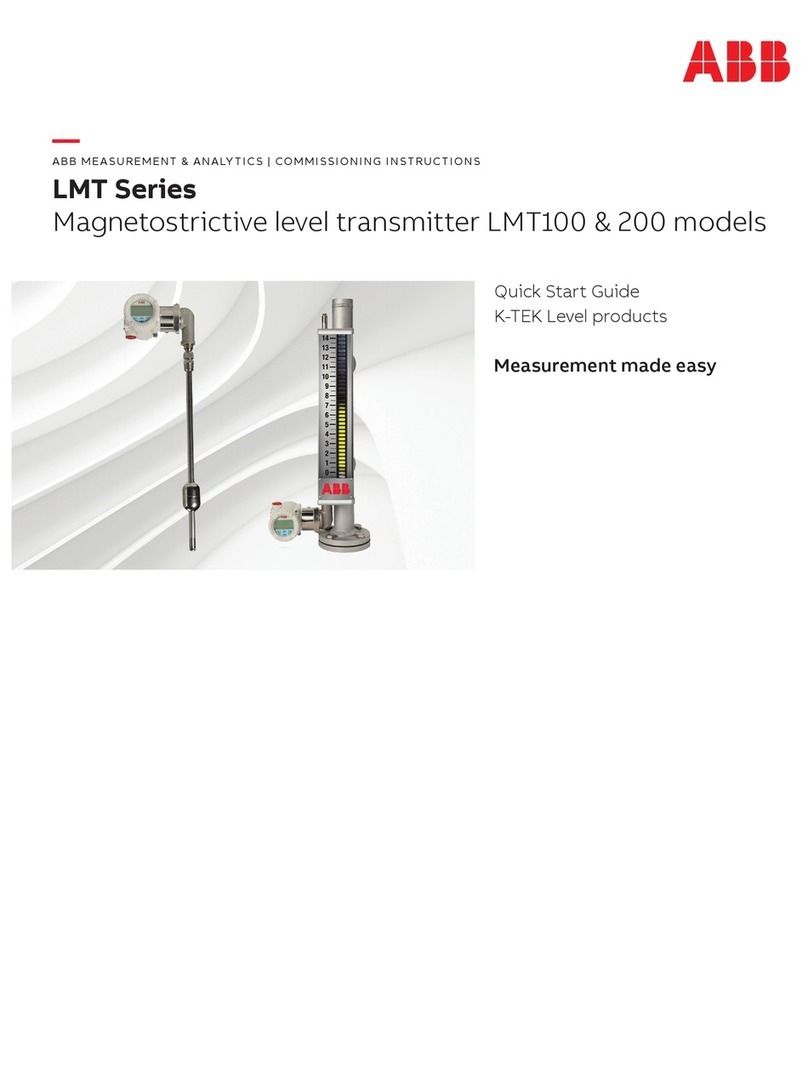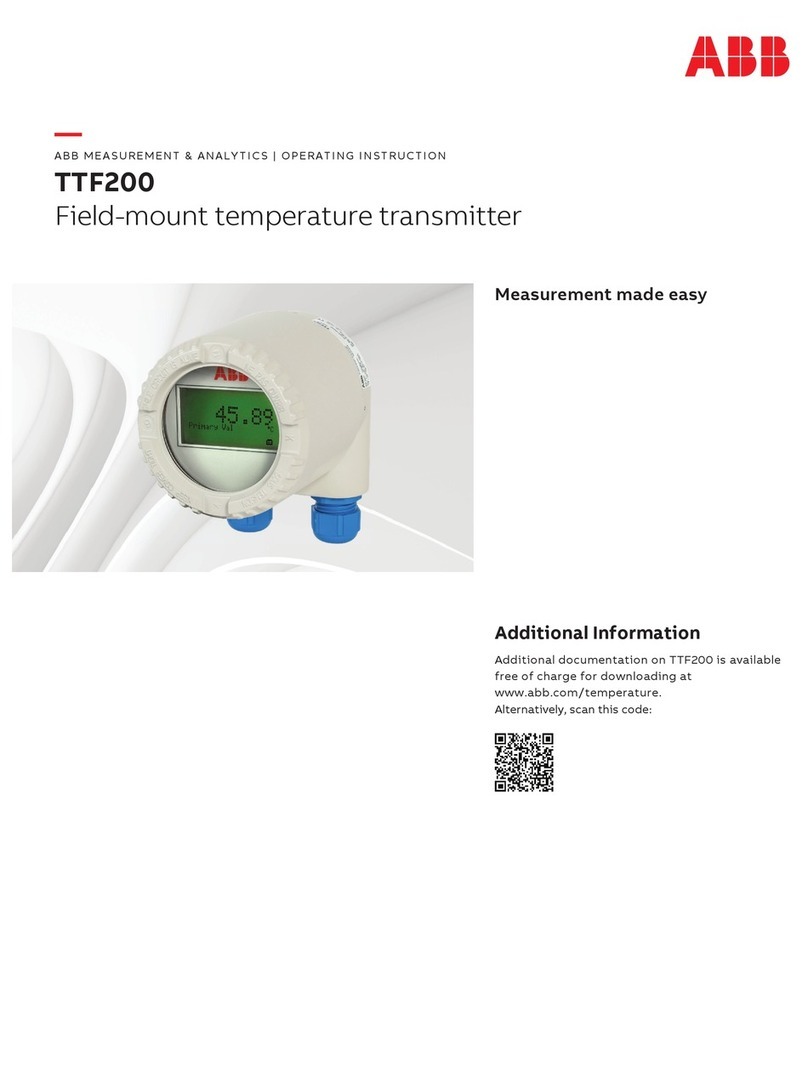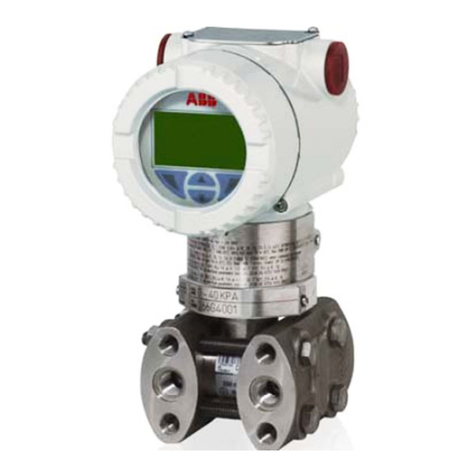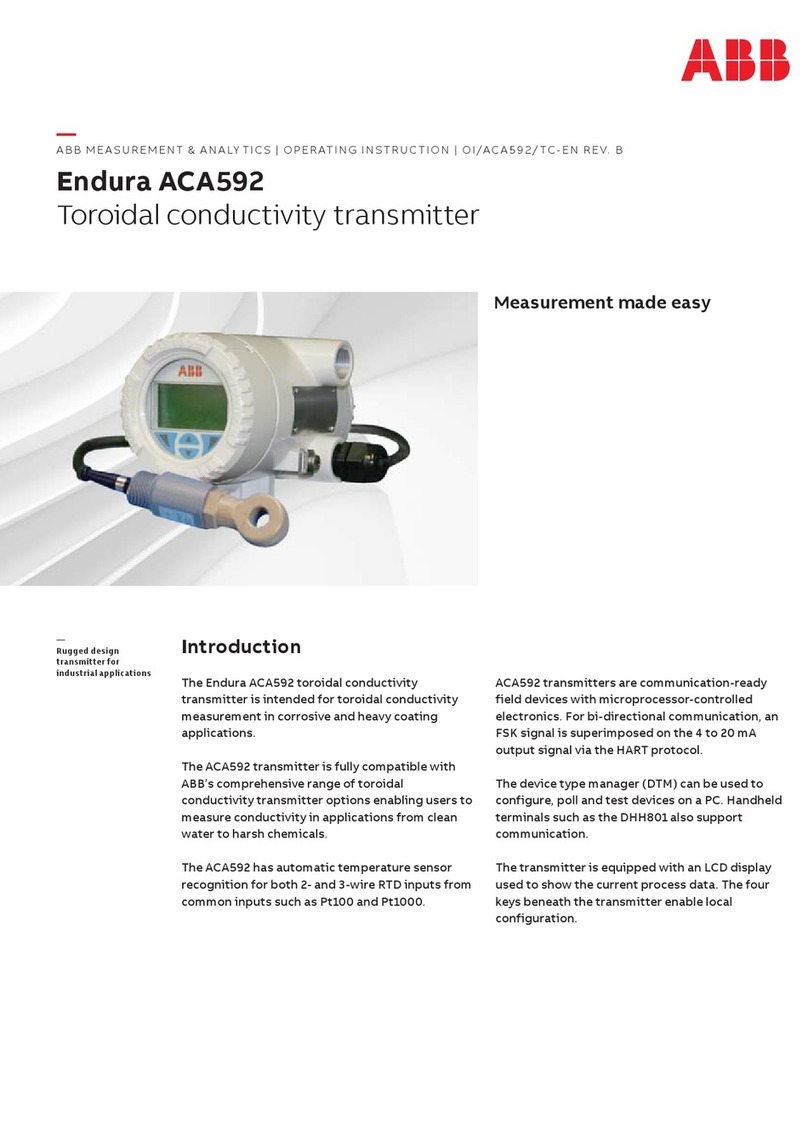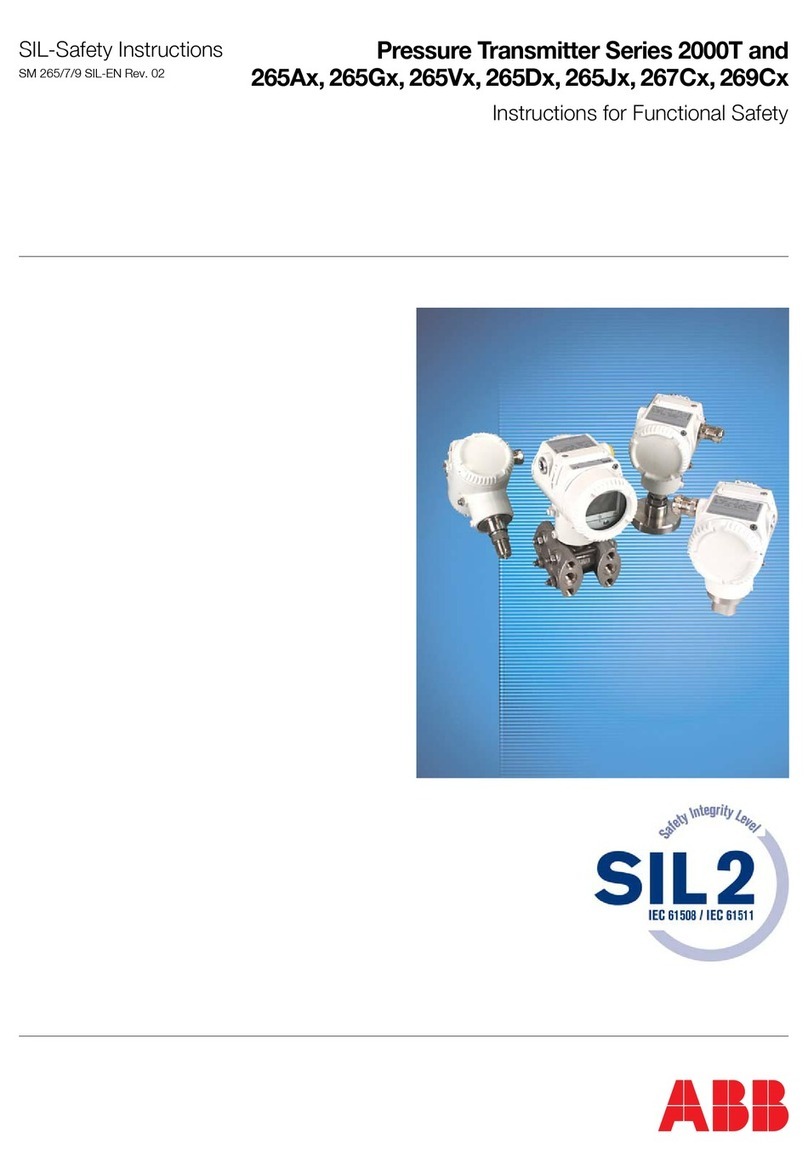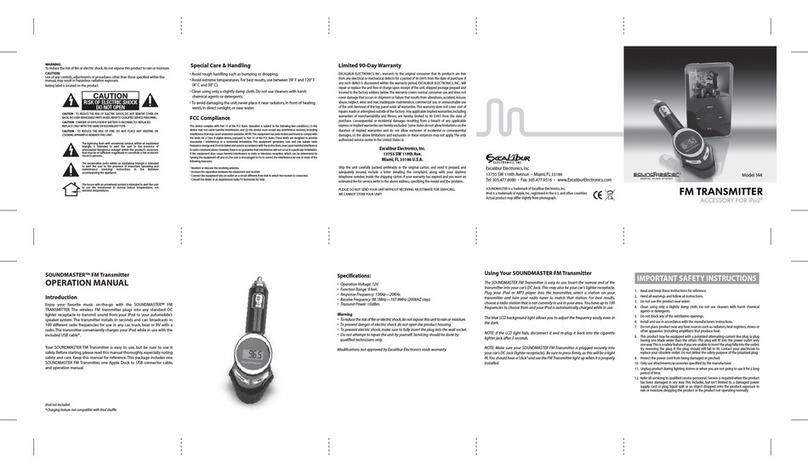
2 TTF300 FIELD-MOUNT TEMPERATURE TRANSMITTER | OI/TTF300-EN REV. G
Table of contents
Change from one to two columns
1Safety..........................................................................4
General information and instructions..................................4
Warnings....................................................................................4
Intended use .............................................................................5
Improper use.............................................................................5
Warranty provisions.................................................................5
Notes on data safety ...............................................................5
Manufacturer’s address..........................................................5
2Use in potentially explosive atmospheres in
accordance with ATEX and IECEx ............................6
Ex marking.................................................................................6
Transmitter ..........................................................................6
LCD indicator ....................................................................... 7
Temperature data ....................................................................8
Transmitter ..........................................................................8
LCD indicator .......................................................................8
Electrical data ...........................................................................8
Transmitter ..........................................................................8
LCD indicator .......................................................................9
Installation instructions........................................................10
ATEX / IECEx ......................................................................10
Cable entries ......................................................................10
Electrical connections ...................................................... 11
Commissioning.......................................................................16
Operating instructions..........................................................16
Damage to the ‘Flameproof (enclosure)– Ex d’ type of
protection........................................................................... 16
Protection against electrostatic discharges................16
Repair .......................................................................................16
3Use in potentially explosive atmospheres in
accordance with FM and CSA ................................. 17
Ex marking............................................................................... 17
Transmitter ........................................................................ 17
LCD indicator .....................................................................18
Installation instructions........................................................ 18
FM / CSA ............................................................................. 18
Electrical connections ......................................................18
Commissioning.......................................................................19
Operating instructions..........................................................19
Adverse effect on the ‘Explosionproof – XP’ type of
protection........................................................................... 19
Protection against electrostatic discharges................19
Repair .......................................................................................20
4Design and function ................................................ 21
Input functionality ................................................................. 21
Sensor Redundancy .......................................................... 21
Sensor drift monitoring ................................................... 21
Sensor error adjustment in accordance with Callendar-
Van Dusen ...........................................................................22
5Product identification.............................................22
Name plate.............................................................................. 22
Explosion protection marking for devices with one
type of protection............................................................. 23
Explosion protection marking for devices with a
combination of explosion protection types ................ 23
6Transport and storage ........................................... 24
Inspection ............................................................................... 24
Transporting the device ....................................................... 24
Storing the device.................................................................. 24
Ambient conditions.......................................................... 24
Returning devices .................................................................. 24
7Installation................................................................25
Ambient conditions............................................................... 25
Mounting................................................................................. 25
Opening and closing the housing....................................... 26
Rotating the LCD indicator.................................................. 26
8Electrical connections .............................................27
Safety instructions ................................................................ 27
Protection of the transmitter from damage caused by
highly energetic electrical interferences ...................... 27
Conductor material ............................................................... 28
Power supply cable........................................................... 28
Cable glands ........................................................................... 28
Shielding of the sensor connecting cable ......................... 28
Examples of shielding / grounding............................... 29
Pin assignment........................................................................31
Terminal for sensor connection cable ............................... 33
Electrical data for inputs and outputs............................... 33
Input - resistance thermometer / resistances ............ 33
Input - thermocouples / voltages.................................. 34
Input functionality ............................................................ 34
Output – HART®................................................................. 34
Output – PROFIBUS PA® .................................................. 35
Output – FOUNDATION Fieldbus® ................................. 35
Power supply ..................................................................... 36
Power supply – HART® ..................................................... 36
Power supply – PROFIBUS / FOUNDATION Fieldbus . 37
9MID Certification..................................................... 38
TTF300 with MID certification ............................................ 38
General................................................................................ 38
Areas of application, conditions and requirements... 38
Installation and Operation .............................................. 38







